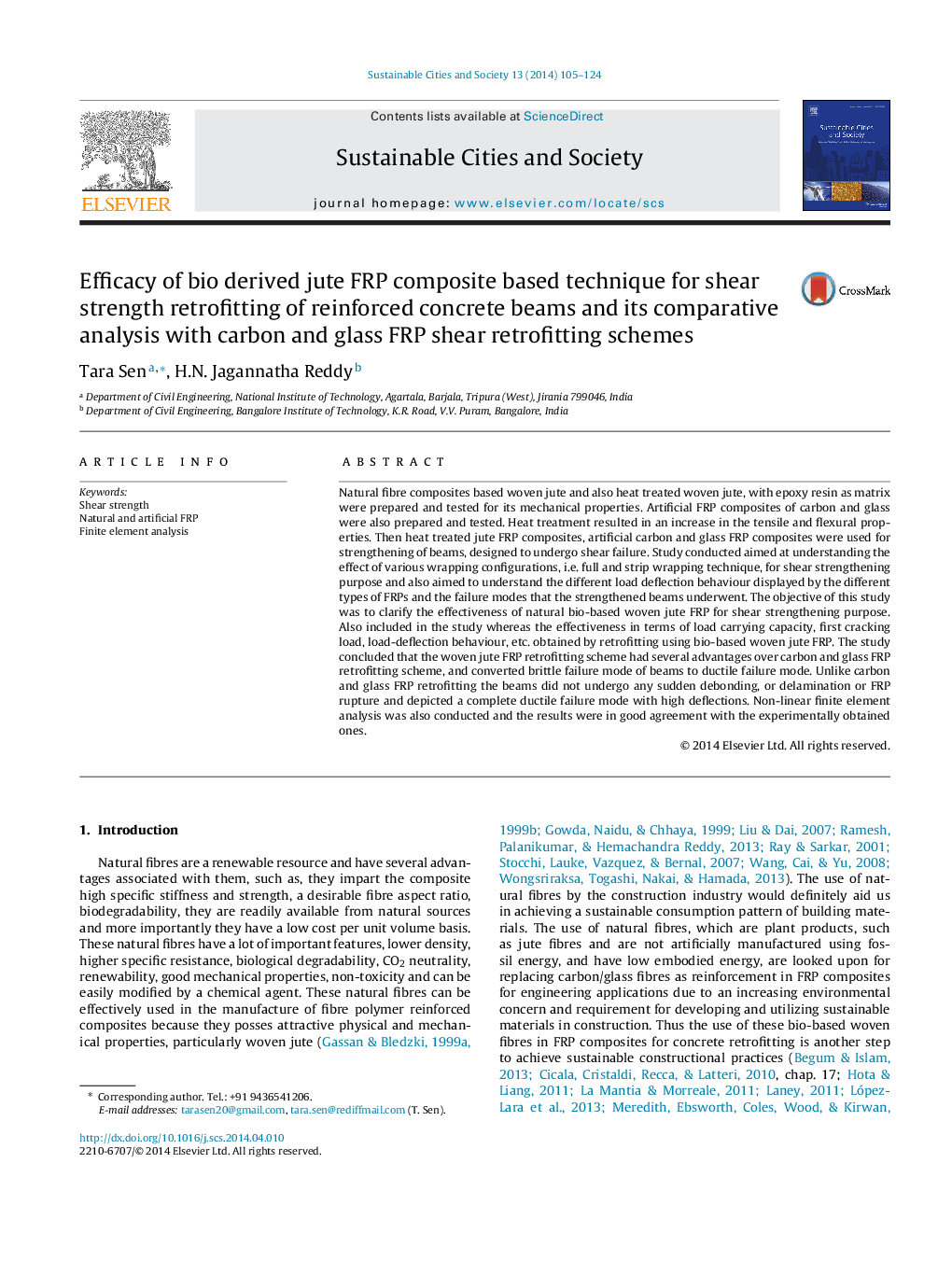| Article ID | Journal | Published Year | Pages | File Type |
|---|---|---|---|---|
| 308150 | Sustainable Cities and Society | 2014 | 20 Pages |
•Heat treated jute FRP had higher tensile and flexural strength than untreated ones.•Fourteen reinforced concrete beams were designed such that they undergo shear failure.•Beams were epoxy bonded with jute, carbon and glass FRP in two wrapping techniques.•Retrofitted beams revealed better strength values, properties than controlled beams.•Unlike artificial FRP, jute FRP retrofitting promoted ductile failure mode.
Natural fibre composites based woven jute and also heat treated woven jute, with epoxy resin as matrix were prepared and tested for its mechanical properties. Artificial FRP composites of carbon and glass were also prepared and tested. Heat treatment resulted in an increase in the tensile and flexural properties. Then heat treated jute FRP composites, artificial carbon and glass FRP composites were used for strengthening of beams, designed to undergo shear failure. Study conducted aimed at understanding the effect of various wrapping configurations, i.e. full and strip wrapping technique, for shear strengthening purpose and also aimed to understand the different load deflection behaviour displayed by the different types of FRPs and the failure modes that the strengthened beams underwent. The objective of this study was to clarify the effectiveness of natural bio-based woven jute FRP for shear strengthening purpose. Also included in the study whereas the effectiveness in terms of load carrying capacity, first cracking load, load-deflection behaviour, etc. obtained by retrofitting using bio-based woven jute FRP. The study concluded that the woven jute FRP retrofitting scheme had several advantages over carbon and glass FRP retrofitting scheme, and converted brittle failure mode of beams to ductile failure mode. Unlike carbon and glass FRP retrofitting the beams did not undergo any sudden debonding, or delamination or FRP rupture and depicted a complete ductile failure mode with high deflections. Non-linear finite element analysis was also conducted and the results were in good agreement with the experimentally obtained ones.
